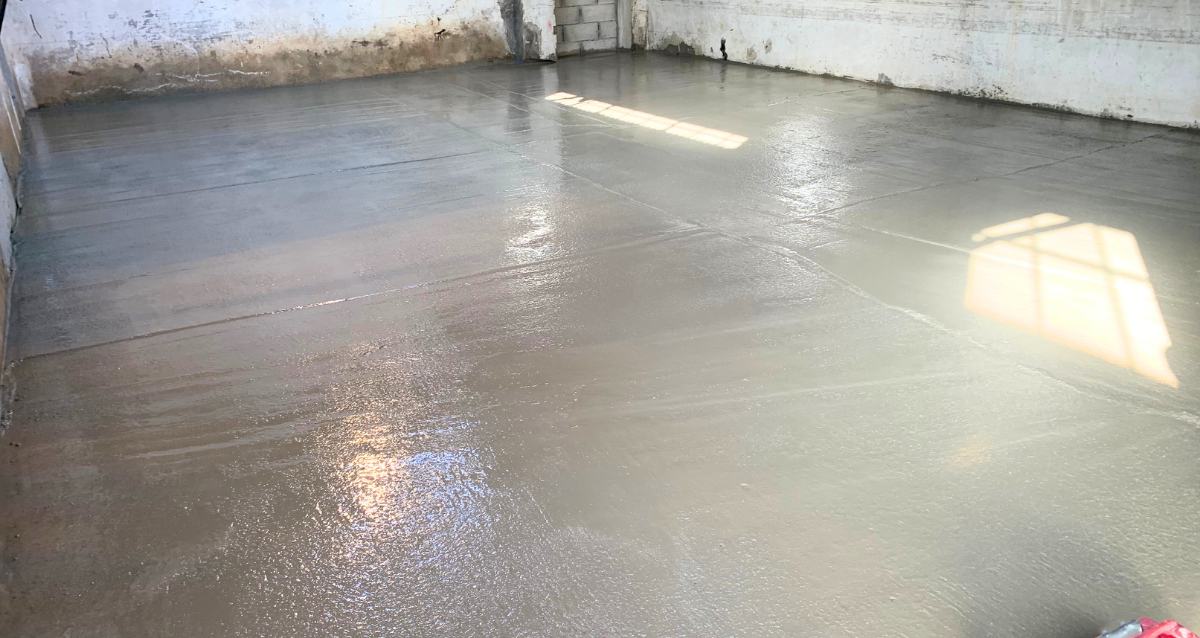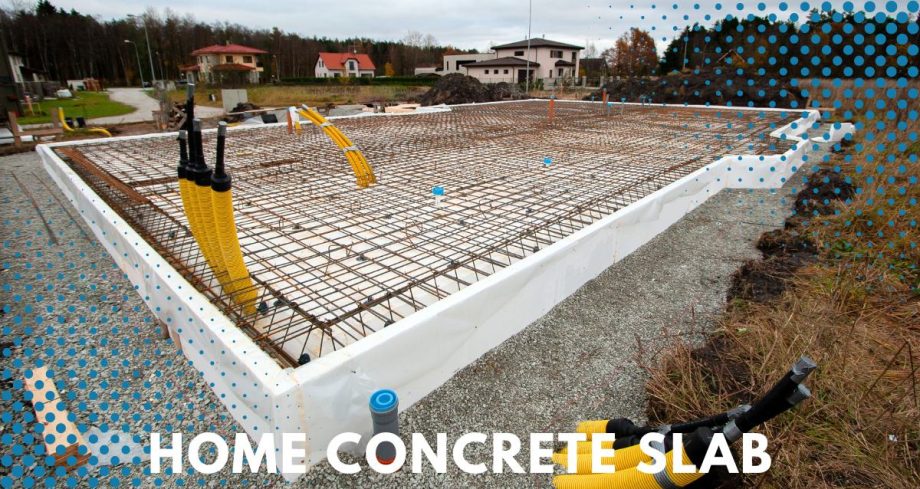Concrete slabs are a foundational element in modern home construction, providing durability, thermal benefits, and cost-efficiency that make them an ideal choice for residential foundations. In this guide, we’ll cover everything you need to know about home concrete slabs, from types and construction methods to maintenance and cost analysis.
Table of Contents
Introduction to Home Concrete Slabs
A home concrete slab is a flat horizontal surface made from poured concrete, often serving as the foundation for houses, garages, patios, and other structures. Known for its durability and low maintenance, the concrete slab is a popular choice in home construction, especially in regions where stable foundations are critical.
Key Benefits of Concrete Slabs in Homes
Concrete slabs are valued for their numerous benefits:
- Structural Stability: Concrete slabs provide a stable and durable base for homes.
- Thermal Mass: They naturally retain and release heat, improving energy efficiency.
- Cost-Effectiveness: Compared to other foundation types, concrete slabs are affordable and long-lasting.

Advantages of Using Concrete Slabs in Homes
Choosing a concrete slab foundation has many advantages. It’s an investment that often reduces overall construction costs while ensuring the home stands on a reliable base. Here are some of the top benefits:
- Durability and Longevity: Concrete slabs can withstand significant weight and environmental stress, contributing to a home’s overall structural integrity. Unlike wood or other materials, concrete doesn’t easily succumb to weather-related damage, pests, or decay, giving it an extended lifespan with minimal maintenance.
- Thermal and Energy Efficiency: Concrete slabs act as thermal masses, retaining heat from the sun and releasing it slowly, which helps regulate indoor temperatures. In colder climates, this can reduce heating needs, while in warmer regions, they can contribute to cooler interior spaces.
- Cost-Effectiveness:While the upfront cost of concrete slab installation might be higher than alternatives like wooden foundations, the longevity and minimal maintenance make it a cost-effective choice over time. Homeowners can save on future repairs and energy costs due to its thermal benefits.
Types of Home Concrete Slabs
Different types of concrete slabs suit various needs and environmental conditions. Below are some common slab types:
- Monolithic Slabs: Monolithic slabs are poured all at once, creating a seamless, single layer. This type of slab is popular for garages and home foundations in areas with stable soil, as it can be quickly installed and requires less labor.
- Post-Tensioned Slabs: For regions with expansive or shifting soil, post-tensioned slabs provide extra stability. They are reinforced with cables or steel tendons that are tensioned after the concrete sets, which helps prevent cracking due to soil movement.
- Raft or Mat Slabs:Raft or mat slabs are ideal for sites with weaker soil, as they distribute the building load over a larger area, reducing the likelihood of settlement. These are thicker and more reinforced than other types, making them suitable for structures that require extensive load-bearing capacity.

Home Concrete Slab Construction Process
Creating a durable concrete slab foundation requires a careful and well-planned process. Here’s a step-by-step guide:
- Site Preparation: preparing the site is critical. This step includes:
- Clearing debris
- Leveling the ground
- Planning drainage and layout
- Setting Up Forms and Rebar: Forms are wooden or metal frames that shape the concrete slab. Rebar, or reinforcement bars, is added within the form to strengthen the slab and prevent cracking. Proper placement and setup ensure the slab’s structural integrity.
- Pouring and Leveling Concrete: Once the site is ready, the concrete is poured into the form and leveled. Using specialized tools, workers ensure the surface is smooth and even, allowing for a consistent, uniform slab.
- Curing and Finishing: Curing is the process of allowing the concrete to harden and reach its maximum strength. This usually takes about 28 days, but the slab surface can be finished to a smooth or textured look before the curing process is complete.
Factors to Consider for Home Concrete Slabs
When planning for a concrete slab, several environmental and structural factors should be taken into account:
- Climate and Weather Impact: Temperature and weather conditions can impact the curing process. In colder climates, concrete additives might be necessary to prevent freezing, while hot climates require moisture control during curing.
- Soil Conditions: Soil stability is crucial for concrete slabs. Loose or shifting soil can lead to cracking, which is why soil testing and preparation are recommended before pouring a slab.
- Load-Bearing Requirements: The thickness of a slab often depends on the intended use. Heavier loads, such as multi-story homes, require thicker slabs and additional reinforcement to prevent structural failure.
Common Issues with Concrete Slabs and Solutions
Concrete slabs are generally durable but may encounter certain issues over time. Addressing these promptly can prevent costly repairs.
- Cracking Causes and Prevention: Cracking can result from improper curing, soil movement, or temperature changes. Reinforcing the slab with rebar and using control joints can help prevent cracking. Regular inspection and maintenance also help mitigate minor cracks.
- Moisture and Dampness Control: Moisture infiltration can lead to damage over time. Applying a moisture barrier under the slab during installation and sealing the surface can help prevent moisture issues, particularly in humid areas.
Read More:
- Earnest Weed Alma Schmaus Marriage: A Beautiful Love Story
- Top Reasons to Invest in a Dartskey Keyboard for Your Workspace
- GatherEco NZ: A Comprehensive Guide to Sustainable Event Planning
Concrete Slab Maintenance Tips
With basic maintenance, concrete slabs can remain in excellent condition for decades.
- Cleaning and Sealing: Keeping the surface clean and applying a protective sealant every few years prevents staining and damage from moisture. Sealants can also enhance the slab’s appearance, providing a polished look.
- Inspecting for Cracks and Damage: Regular inspection helps identify cracks, chipping, or signs of wear. Small cracks can be filled with sealant to prevent them from spreading, while larger issues might require professional repair.
Cost Analysis: Is a Concrete Slab Worth It?
The cost of a concrete slab foundation depends on factors like material, thickness, and labor, but it generally offers excellent long-term value due to its durability and low maintenance. Homeowners looking for a one-time investment that supports longevity and energy savings will often find concrete slabs an ideal choice.
DIY vs. Hiring Professionals for Concrete Slabs
While DIY slab installation may save money, professional services ensure high-quality construction. Professional contractors have experience managing soil conditions, reinforcement, and curing processes, which is critical for a durable slab.

Conclusion
Home concrete slabs offer a durable, energy-efficient, and cost-effective solution for foundations, patios, and flooring. Whether you’re building a new home or upgrading your existing property, a concrete slab can provide the strength and versatility needed for long-term stability. By choosing the right slab type and following best practices in installation and maintenance, you can ensure that your concrete slab will stand the test of time.
FAQs about Home Concrete Slabs
Q: How thick should a home concrete slab be?
A: The thickness typically ranges from 4 to 6 inches, but this depends on the load requirements and soil conditions.
Q: Can concrete slabs crack over time?
A: Yes, minor cracks can occur naturally, but proper reinforcement and curing can prevent significant cracking.
Q: What is the cost of installing a concrete slab?
A: The average cost varies but typically ranges from $4 to $8 per square foot, depending on labor, materials, and site conditions.
Q: Is it safe to build on a concrete slab in cold climates?
Yes, but precautions such as insulation and moisture barriers are necessary to prevent frost damage.
Q: Can concrete slabs support multi-story homes?
A: Yes, with proper reinforcement, concrete slabs can support multi-story structures.
Q: What is the cure time for concrete slabs?
A: A concrete slab generally takes 28 days to cure completely, reaching full strength for load-bearing.
